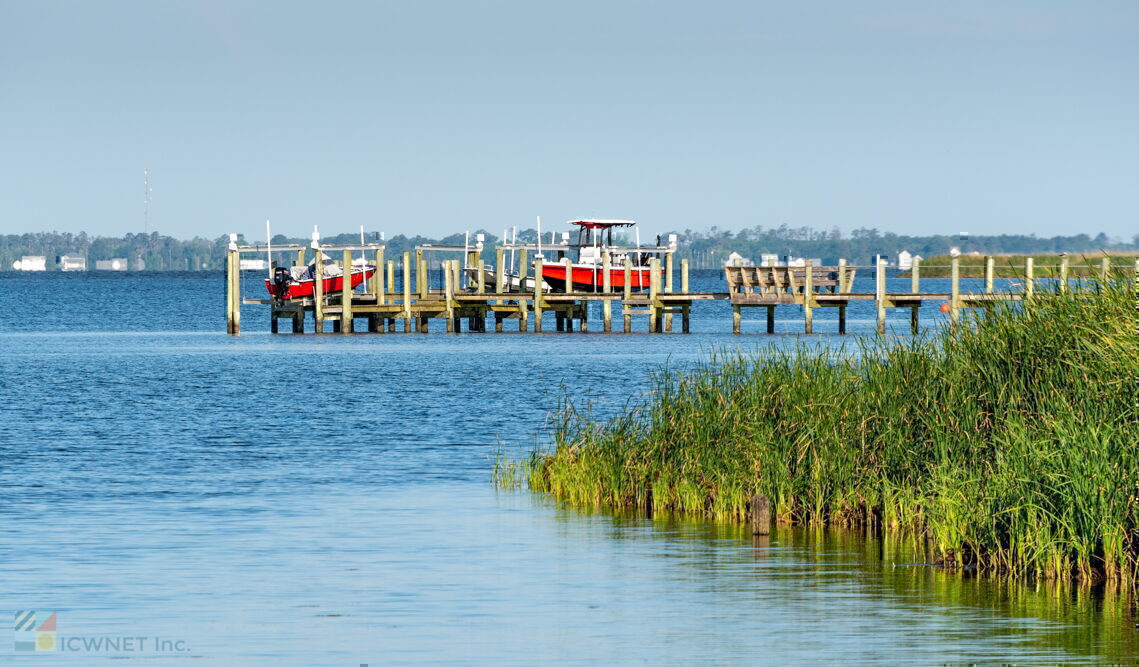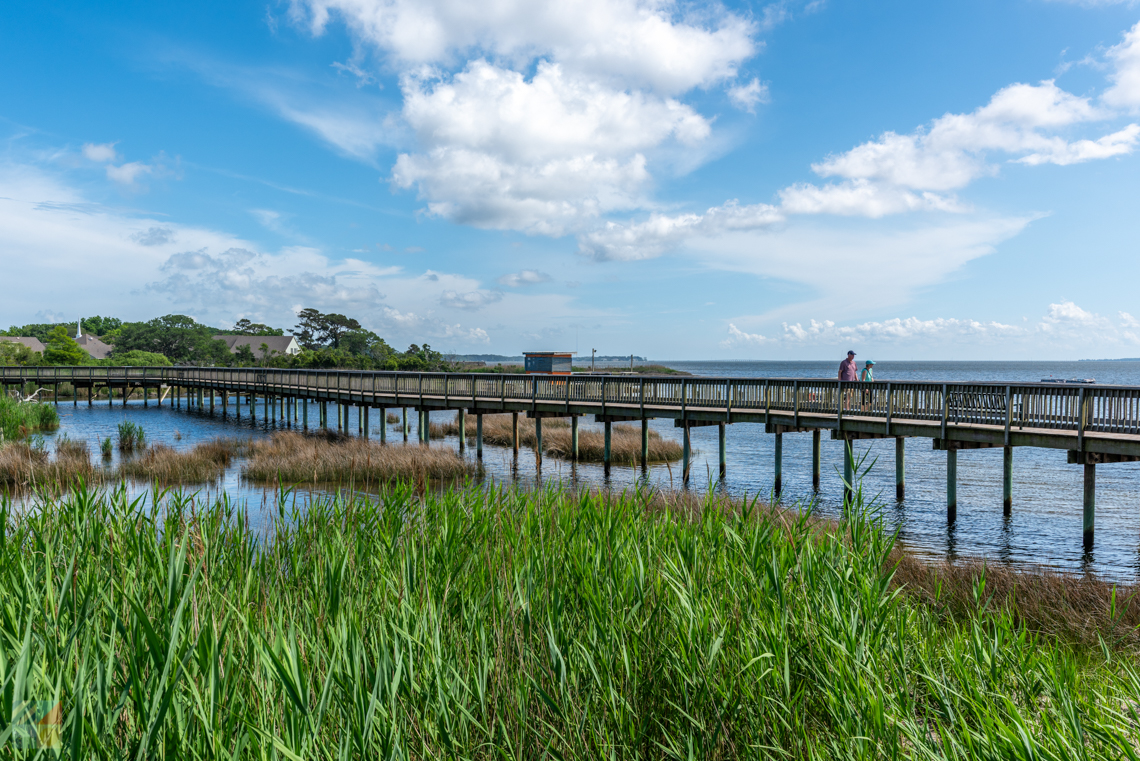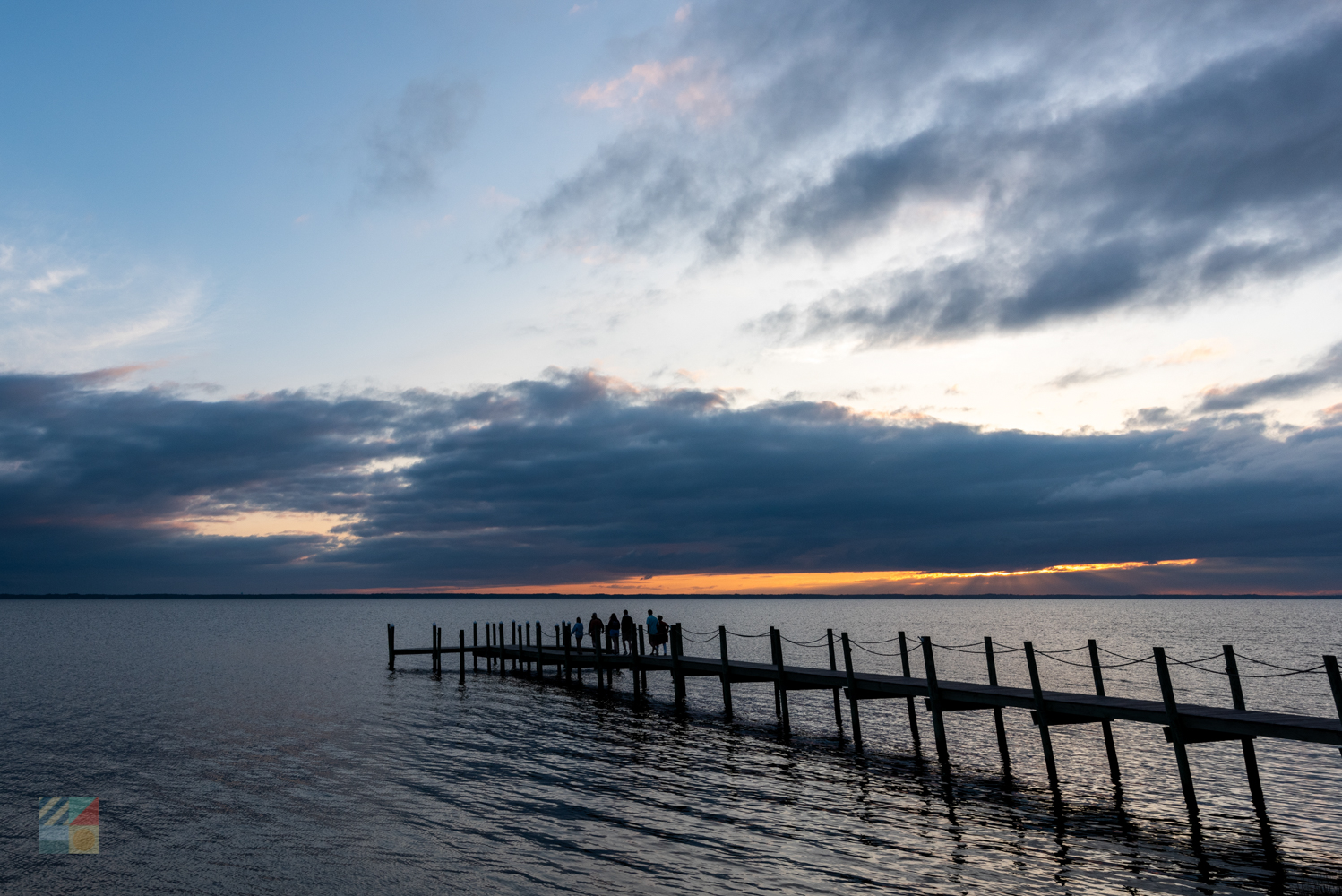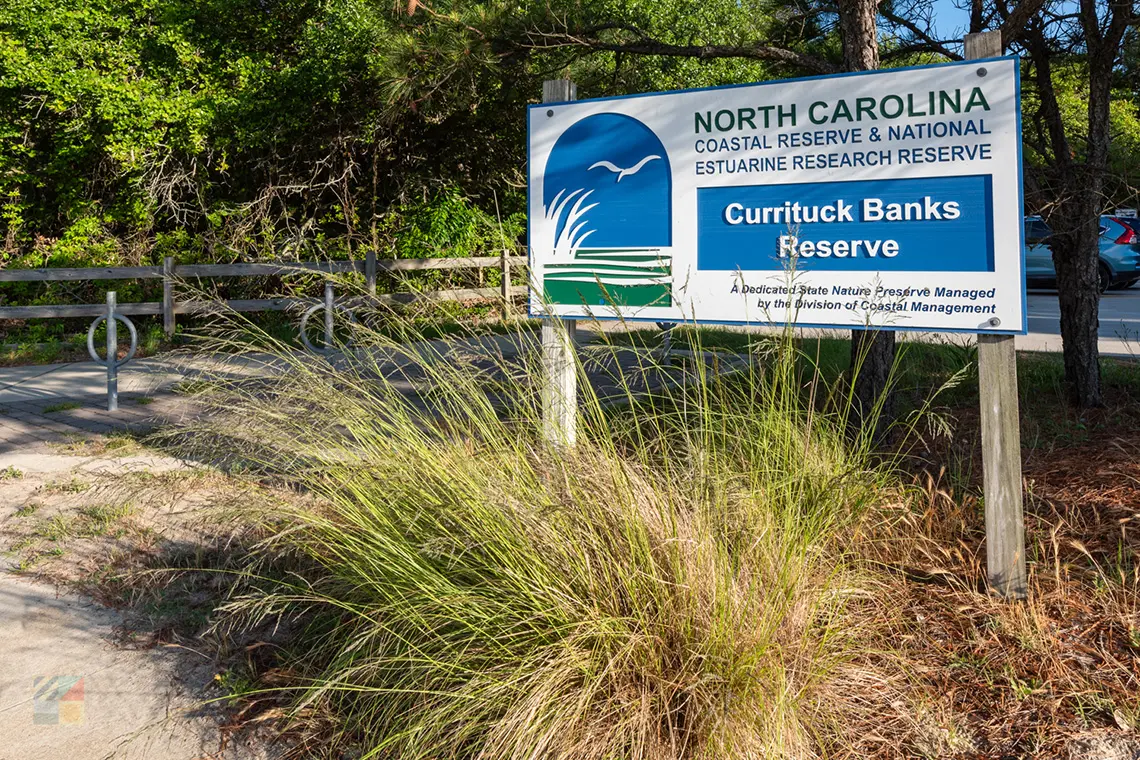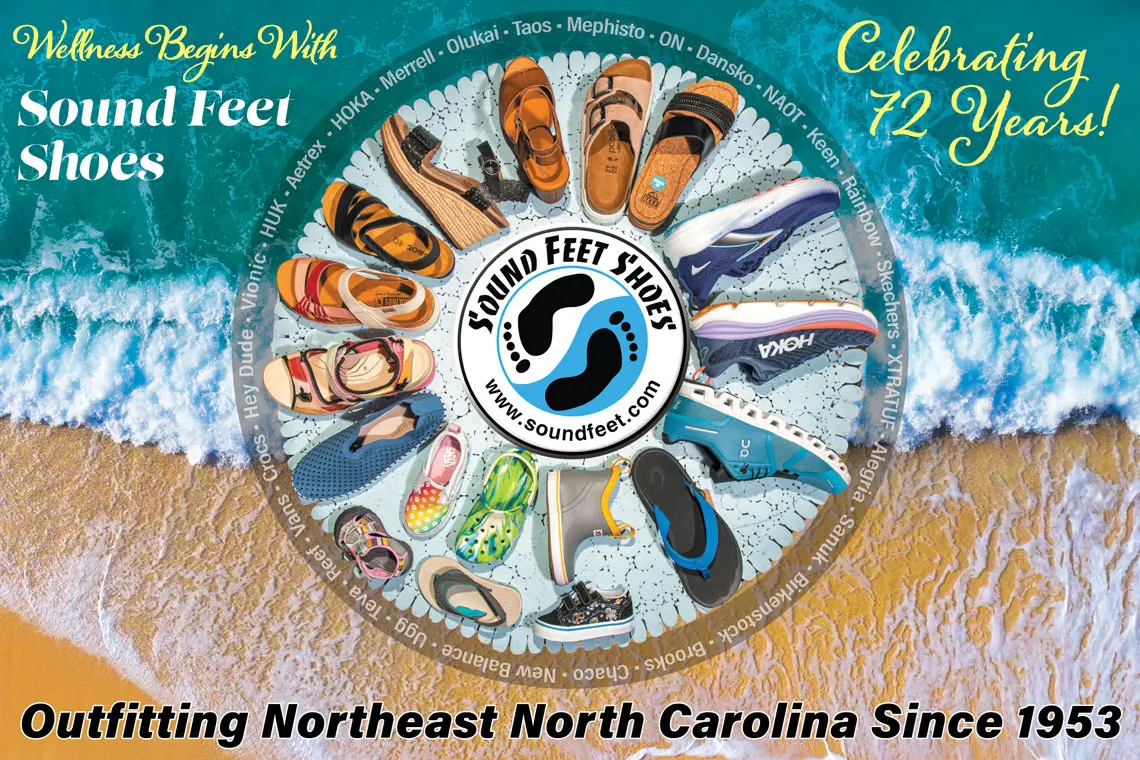Currituck County is effectively comprised of more water than land, thanks to the 30-mile long Currituck Sound.
This expansive body of water separates the mainland from the barrier island beaches, offers some of the best fishing opportunities in Eastern NC, and serves as the home for countless permanent and migrating wildlife.

Significance to the area
When the Currituck Sound was first formed centuries ago, it was bordered by the original Currituck Inlet, which fed the sound with saltwater and contributed to its enormous size.
The inlet was gradually filled in as new inlets - specifically Oregon Inlet and Hatteras Inlet - were formed further south, and in the ensuing centuries, the water of the Currituck Sound changed.
With just rain water feeding the sound for the past 200 years or so, the water quality has become nearly freshwater, which makes it the most unique sound along the Outer Banks. (Neighboring sounds of comparable size, like the Pamlico Sound and the Albemarle Sound, are still fed by saltwater from their respective adjacent inlets.)
Because of this freshwater quality, coupled with its massive size, the Currituck Sound is distinctive, and is significant to the Currituck County region for a number of reasons:
- The Currituck Sound ecosystem and freshwater qualities can accommodate both freshwater and saltwater species, making the region a goldmine for fishermen and biologists alike.
- Historically, the Currituck Sound has been the biggest attraction for Currituck County. Hunters and anglers from all across the country began visiting the area as early as the late 1800s.
- The three refuges or preserves that border the Currituck Sound - the Currituck Banks Reserve, the Currituck Wildlife Refuge, and the Mackay Island National Wildlife Refuge - offer hundreds of miles of refuge for local wildlife
- The Currituck Sound serves as a temporary home for thousands of migrating waterfowl, including Canadian geese, ducks, herons, egrets and ibises.
- Knotts Island, located in the heart of the sound, is served by one of the state of North Carolina's seven ferry routes, namely the Knotts Island - Currituck Ferry.
- Talks have been in the works for several years to build the "mid-Currituck bridge," which would be built across the sound, and would connect the Currituck mainland with the barrier island beaches. If a bridge is built, it will become one of the most traveled bridges in the state of NC.
- The Intracoastal Waterway (ICW) cuts through a section of the Currituck Sound in the heart of Currituck County, and is used by thousands of mariners every year. Travelers along US Highway 158 will cross over the ICW in Coinjock on Stringer Bridge.
- The Currituck Sound is responsible for thousands of visitors to the region every year, thanks to its exceptional kayaking, bird watching, stand-up paddleboarding, fishing, and boating.
Fishing
Fishing is one of the most popular activities in the Currituck Sound, thanks to the abundance of terrain to explore and wide range of fresh and saltwater species that call the sound waters home.
Anglers who want to check out these largely uninhabited and fruitful waters will want to keep the following considerations in mind.
- A freshwater or saltwater fishing permit may be required, depending on where in the Currituck Sound an angler is fishing.
- Local tackle shops can help newcomers determine what type of permit is required, and anglers can purchase the license on-site as well. Area tackle shops include TW's Bait & Tackle inCorolla, Currituck Sports in Barco, East Coast Home & Garden in Moyock, Midway Marina & Motel in Coinjock and Stewart's Hunting Lodge in Currituck
- Fishing licenses can also be purchased online before arrival via the North Carolina Wildlife Resources Commission (NCWRC) website at http://www.ncwildlife.org/
- The best months for fishing in the Currituck Sound region are April, May, September and October
- A number of saltwater and freshwater species can be caught in the sound, including flounder, trout, sun fish, catfish and crabs.
- The most prized and sought-after fish in the Currituck Sound is the largemouth bass, which is making a gradual comeback to the region after decades of over-fishing.
- Anglers can enjoy a wealth of different fishing from a boat, kayak, or via a public fishing deck or boardwalk.
- Fishing platforms, decks or general venues for anglers without a boat can be found at Veterans' Memorial Park in Coinjock, Poyner's Road Park in Moyock, and Maple Park in Maple.
- Several charter companies also offer inshore trips for Currituck Sound anglers, including East Carolina Charters, Albemarle Fishing Charters, the Carolina Sunrise, Island Girl Charters and Outer Banks Charter Fishing Adventures.
- There are regulations for the minimum length and bag count which are monitored by the Wildlife Resources Commission. Complete guidelines by species can be found online at http://portal.ncdenr.org/web/mf/recreational-fishing-size-and-bag-limits.
Vacationers adore the Outer Banks for its unspoiled stretches of undeveloped shoreline, and some may not initially realize that this sporadic lack of development is completely intentional, and is the result of decades of careful environmental...
Welcome to Mike Dianna's Grill Room, home to the finest seafood, USDA prime beef, amazing live entertainment and more! Come have brunch or dinner with us in Corolla on the beautiful Outer Banks. Celebrating over 20 years in the Timbuck II Shopping...
Just for the Beach Rentals (not to be confused with the similarly-named "Just for the Beach") offers rentals to accommodate your stay. Equipment includes linens, baby gates, cribs, monitors, seats, joggers, bikes, kayaks, skim boards, surf boards...
Sound Feet Shoes is family owned and operated. Sound Feet has been in the retail shoe business for over 72 years, opening their first store in 1953. They provide the best customer service and are the only Outer Banks’ area full service shoe...
